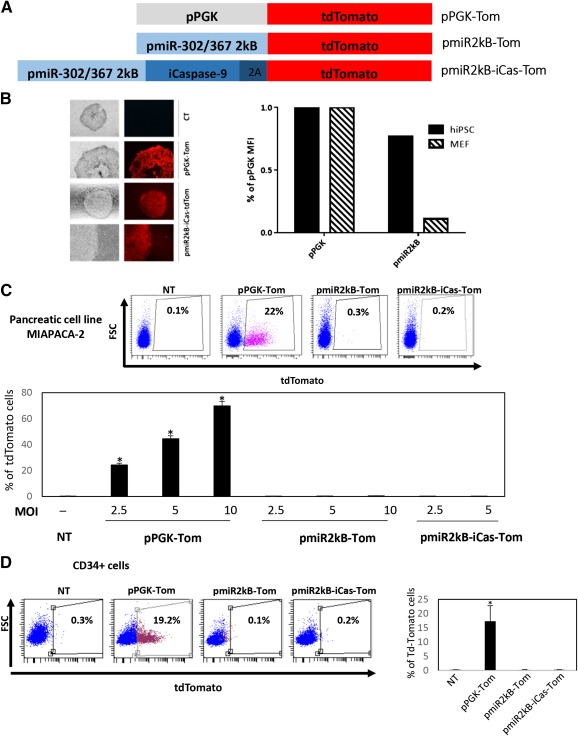Figure 3.

The promoter region of pmiR‐302‐367 is specifically active in embryonic stem cells, but not in hematopoietic stem cells or pancreatic tumor cells. (A): iPSCs were transduced with lentivectors carrying the tdTomato reporter gene under the control of the pPGK ubiquitous gene, or the pmiR302‐367 embryonic‐specific promoter. The third construct carries the iCaspase‐9 suicide gene and the 2A sequence upstream the reporter gene. (B): Left panel: iPSCs were transduced with pmiR2kB‐iCas‐Tom or the pPGK‐Tom lentivectors. Transduced cells were sorted by flow cytometry, and fluorescence was observed by microscopy using the same gain (CT: untransduced cells). Right panel: MFIs were measured by flow cytometry and expressed as a ratio of the pPGK MFI. (C): pmiR2kB‐Tom activity was tested in pancreatic cells at increasing multiplicities of infection (MOIs), compared with pPGK. Top: Flow cytometry dot plots with % tdTomato‐positive cells. Bottom: Bars represent mean ± SD % of tdTomato‐positive cells with increasing MOIs. (D): pmiR2kB‐Tom activity was tested in hCD34+ cells, compared with pPGK. Left: Flow cytometry dot plots with % tdTomato‐positive cells. Right: Bars represent mean ± SD % of tdTomato‐positive cells. ∗, p < .05. Abbreviations: hiPSC, human induced pluripotent stem cells; iCaspase‐9, inducible Caspase‐9; iPSCs, induced pluripotent stem cells; MFIs, mean fluorescent intensities; NT, nontransduced cells; pPGK, phosphoglycerate kinase.
